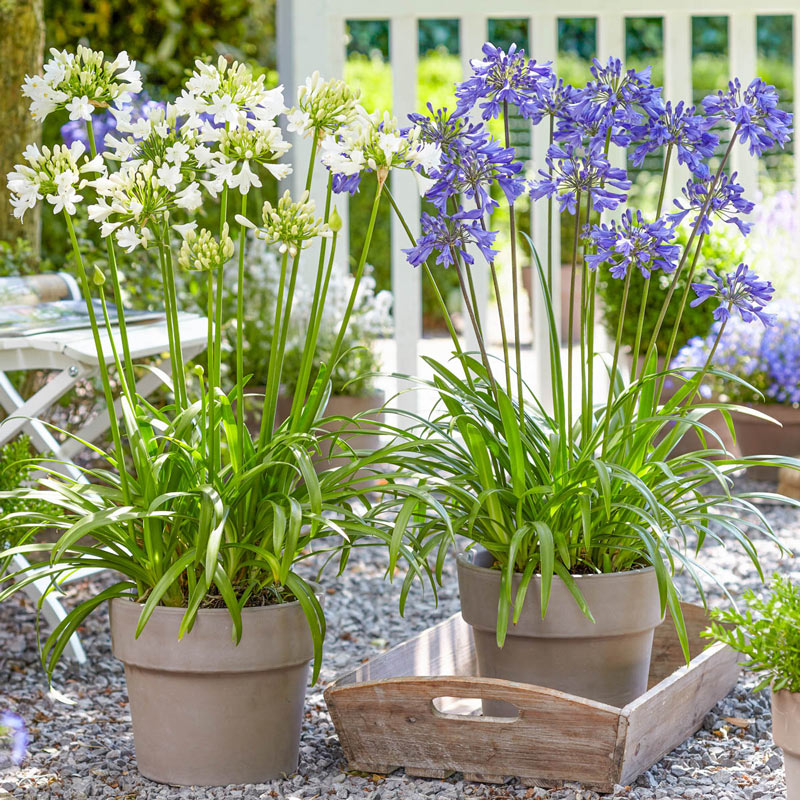Just how to Plant and Maintain Agapanthus in Your Garden
Just how to Plant and Maintain Agapanthus in Your Garden
Blog Article
Grasping the Art of Agapanthus Care: Essential Steps for Healthy And Balanced Growth and Dynamic Blossoms
In the realm of cultivation, the cultivation of agapanthus stands as a rewarding endeavor for those that look for to support these sophisticated flowering plants. From choosing the right variety to mastering trimming methods, the journey towards growing growing agapanthus plants is complex and holds the crucial to unlocking the full capacity of these organic gems.

Picking the Right Agapanthus Selection

When selecting the right Agapanthus variety for your yard, think about elements such as climate viability, bloom shade, and development practice. Additionally, take into consideration the environment in your region to make certain the Agapanthus range you select can thrive in your details conditions. Understanding the development practice of various Agapanthus selections is vital for proper placement within your yard.
Suitable Growing Problems
Considering the optimum environmental needs is necessary for successful Agapanthus farming. Agapanthus plants are sensitive to cool temperatures and must be secured from frost during winter season months.
To make sure healthy development and lively blossoms, plant Agapanthus light bulbs at a depth of regarding 2-4 inches and space them 8-12 inches apart. Including organic matter, such as garden compost, to the dirt can improve drainage and fertility, promoting durable origin development. Mulching around the base of the plants helps keep dampness and subdues weed growth. Regular watering is important, especially during the expanding period, to maintain the soil constantly wet but not soaked.
Watering and Fertilizing Tips
Preserving correct dampness levels and offering important nutrients are crucial components in the treatment routine for Agapanthus plants. It is essential to strike an equilibrium when it comes to watering Agapanthus. If overwatered, these plants choose regularly moist dirt however are susceptible to root rot. During the expanding season, water deeply once a week, making sure the dirt is well-draining to stop waterlogging. In hotter climates or throughout periods of dry spell, even more frequent watering might be essential to maintain the soil uniformly moist. Nonetheless, minimize watering in the wintertime to stop water logged problems.
Fertilizing Agapanthus is essential for advertising healthy growth and respected flowers. Use a well balanced plant food, such as a 10-10-10 formula, in the very early springtime as new development arises. By following these watering and feeding ideas, you can guarantee your Agapanthus plants thrive and create vivid, long-lasting blossoms.
Pruning Methods for Agapanthus
Trimming Agapanthus plants at the ideal times and with correct strategies is important for keeping their wellness and advertising optimal development and flowering. The suitable time to trim Agapanthus is in late winter months or early springtime prior to new growth emerges.
Deadheading spent blossoms can likewise redirect the plant's power into creating even more flowers instead than setting seeds. If you want to gather seeds for breeding, leave some blossoms to fully grown and dry on the plant.
Keep in mind to utilize tidy, sharp Learn More Here devices to make specific cuts and lower the danger of presenting illness. Agapanthus. Regular trimming will certainly aid keep your Agapanthus looking neat and healthy while making sure a bountiful screen of gorgeous flowers
Taking Care Of Common Bugs and Conditions
After making sure proper pruning strategies for Agapanthus, it is vital to resolve common pests and diseases that can influence the health and vigor of these plants. Agapanthus plants are typically sturdy yet can still succumb particular concerns. One usual parasite that affects Agapanthus is the Agapanthus gall midget. This tiny, orange fly lays its eggs in the foliage, bring about altered growth and blossom buds that fall short to open. To combat this parasite, prune and damage any affected plant components and think about making use of insecticidal soap.
Furthermore, Agapanthus plants can suffer from root rot if they are grown in inadequately draining pipes dirt. By being vigilant and taking prompt action versus parasites and diseases, you can help your Agapanthus plants flourish and produce vibrant blossoms. Agapanthus.

Conclusion
Finally, grasping the art of agapanthus care includes choosing the appropriate selection, giving ideal growing conditions, proper watering and feeding, proper pruning methods, and addressing typical insects and diseases. By adhering to these vital steps, you can make certain healthy growth and lively blooms for your agapanthus plants. Bear in mind to consistently keep an eye on and maintain your plants to promote their overall wellness and longevity.
To make sure healthy development and vibrant flowers, plant Agapanthus bulbs at a deepness of about 2-4 inches and area them 8-12 inches apart. By following these watering and fertilizing pointers, you can ensure your Agapanthus plants grow and produce lively, More Bonuses long-lasting blossoms.
One typical insect that impacts Agapanthus is the Agapanthus gall midge. In addition, Agapanthus plants Resources can endure from root rot if they are planted in inadequately draining pipes soil. By complying with these crucial steps, you can make sure healthy and balanced growth and vibrant blossoms for your agapanthus plants.
Report this page